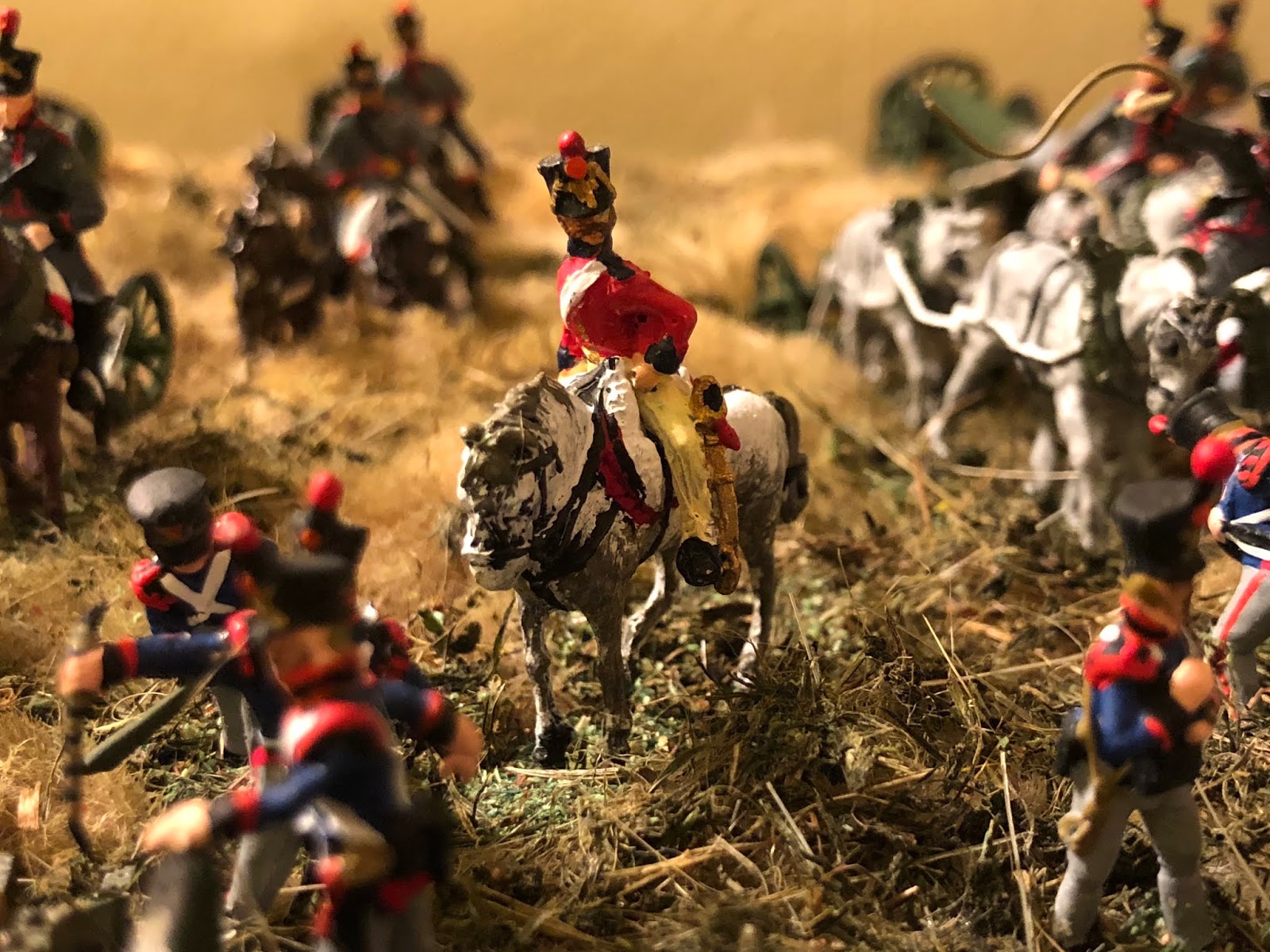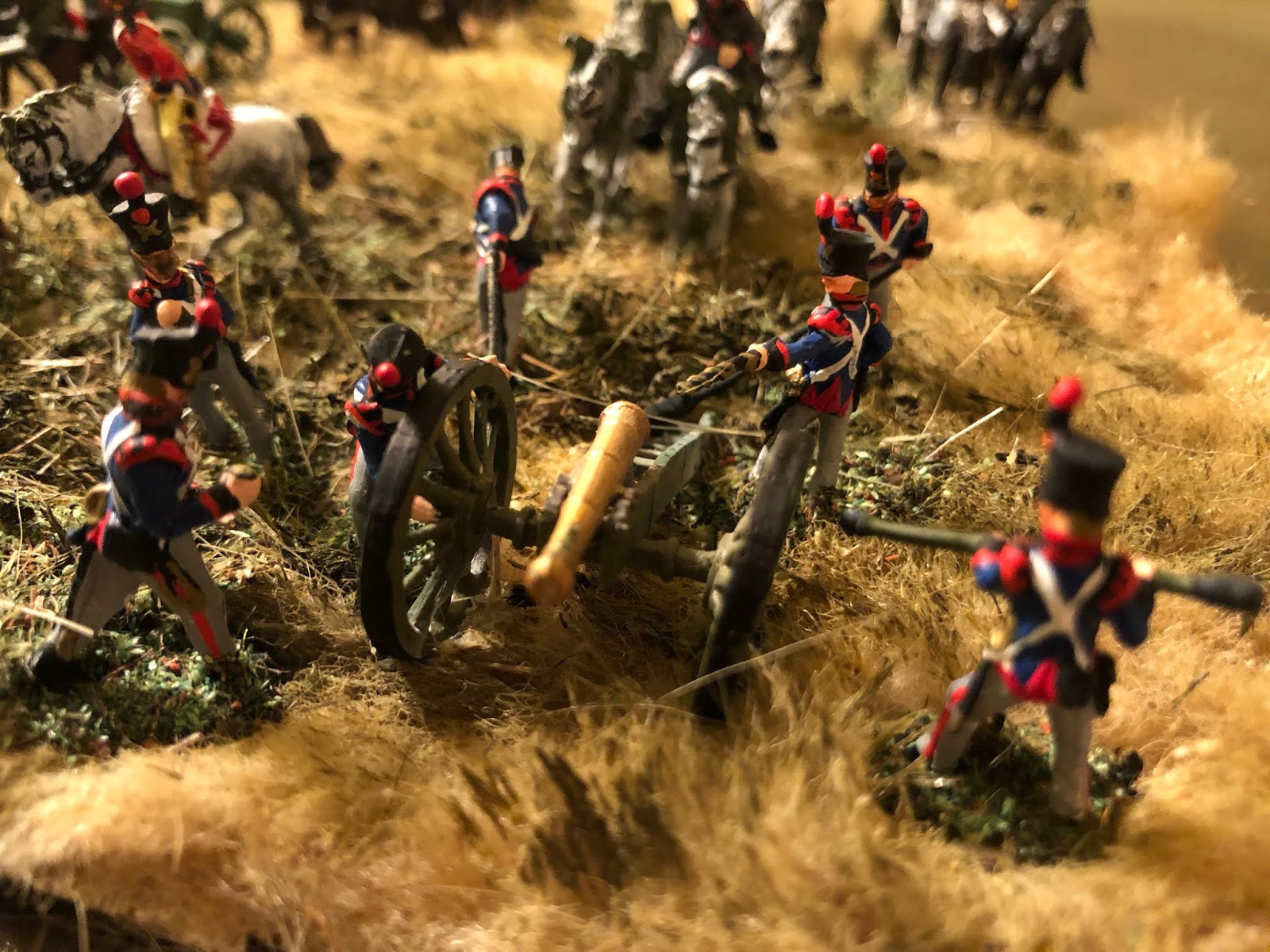I've not posted for a while, but am now back up and running. Here is my attempt at a Dutch Horse Artillery battery. There is more on my Blog at http://generalpicton.blogspot.com . Hope you like them.









Major Krahmer is a good example of the mixed origins of the Allied Army at Waterloo. He was born in Corbach in Germany in 1787. He entered the Batavian army in January 1804 joining Horse Artillery Battery No 1, part of Mortier’s VIII Corps. He took part in the campaign in Swedish Pomerania in 1807 and the battle of Friedland on 14 June 1807, where Mortier’s Corps formed the left wing of the French army. The Dutch horse artillery was in position in front of Heinrichsdorff village. Firing until 6.00 pm, the battery was taken out of the line except for a single 6-pdr cannon commanded by Krahmer, who fired another 160 shots with ammunition supplied by a nearby French battery, being decorated with the Légion d’Honneur for his efforts. He fought in Germany in 1809 during the siege of Stralsund. He was lucky to miss the Russian campaign of 1812 and fought in Germany in 1813 as part of the garrison of Dresden and was taken prisoner.
In 1814, now with the new Dutch army, he commanded the combined 7th and 8th companies of the Horse artillery. The battery was notorious for high rates of desertion, deserters taking their horses and weapons with them. This battery was armed with six short 6-pdr bronze cannon, and two 24-pdr (iron) bronze howitzers.
On 7 April 1815 the battery was at Brussels. A few days later, it joined Detmers Brigade of Chassé's Division and did not take part in the battle of Quatre-Bras.
At Waterloo, d’Aubremé's Brigade guarded the flank at Braine l’Alleud, so Krahmer was attached to it. At 3.00 pm, d’Aubremé was ordered to link up with Clinton's Division, placed in second line on the right wing of the Anglo-Allied army. The Division was placed in low ground along the chaussee from Nivelles to Mont St. Jean, about 500 metres behind the Guard brigades. Around 7.30 pm Chassé noticed that the fire of the British artillery in front of him slackened because of sustained casualties of the heavy French artillery fire and lack of ammunition. Observing the advance of the French Guard, Chassé took the initiative and ordered Krahmer into the firing line, relieving Cleeve’s battery.
Upon receiving the order, the Battery galloped along chaussee with Krahmer leading, pointing with his sabre to the space where he wanted the guns deployed. Once unlimbered, the battery opened fire against the French Guard artillery batteries west of La Haye Sainte and the advancing French Guard infantry, “literally cut lanes through the column in our front”. Around 8.00 p.m. Detmers charged the French Guards; Krahmer also advanced and supported the infantry . When the French retreated, night already falling, the battery limbered and took part in the pursuit of the French army, firing grapeshot into their wavering ranks twice and contributing to its final rout. The battery bivouacked near Rossomme that night. During the battle, the battery lost 27 men dead, and 21 men wounded.



 Moderator
Moderator



